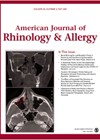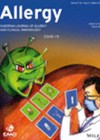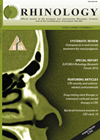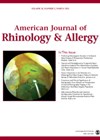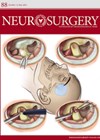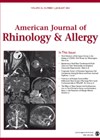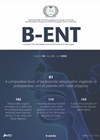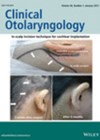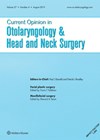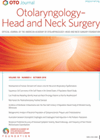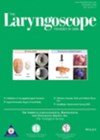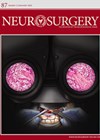
Journal Reviews
How much does FESS improve the sense of smell?
We are all familiar with patients who undergo a seemingly successful FESS but, in spite of this, have persistent smell dysfunction postoperatively. This study compares a surgical group with a control group, measuring olfactory function pre and postoperatively using Sniffin...
COVID-19 in patients with chronic rhinosinusitis with polyps. Are they at risk?
COVID-19 entry factors are highly present in nasal epithelial cells. These factors include ACE2 and TMPRSS2. Their presence in patients with chronic rhinosinusitis with nasal polyps (CRSwNP) was not investigated before. Authors investigated expression of ACE2 and TMPRSS2 in two...
Does septoplasty improve smell?
This is a study from Barcelona on a very interesting topic: does septoplasty change sense of smell? The theory being that a deviated septum would prevent airflow to the olfactory region and once the anatomical obstruction has been relieved, that...
Can we predict how much benefit patients will get from ESS with a novel monoclonal antibody
Mepolizumab (Nucala) is a humanised IgG1 monoclonal antibody that acts as an IL-5 antagonist. It has been shown to be highly effective in treating severe asthma. It is hypothesised that it will be effective for patients with recalcitrant CRSwNP. This...
Review of pituitary tumour pathology
This is an excellent review article covering the pathology of pituitary adenomas (PA) as well as rare sellar lesions like lymphocytic hypophysitis that require aggressive treatment. The authors have preserved the 2017 World Health Organization (WHO) classification of PA and...
Simple preoperative tests predicting outcomes for ESS patients?
We are all familiar with patients suffering extensive nasal polyps who relapse all to soon after careful and thorough endoscopic sinus surgery (ESS). This paper looks to answer whether we can predict which patients will do well, and which less...
Nasal function in COVID-19 patients
This Turkish prospective study compared SNOT-22 outcomes as well as objective assessments of nasal secretion and clearance in 40 patients who tested positive on COVID-19 antigen PCR testing and 40 patients who tested negative. Sinonasal findings were assessed using a...
Loss of smell in the age of COVID-19
Loss of smell (LOS) is a debilitating symptom with increasing interest for the medical community due to its high prevalence in COVID-19. In the present paper, a team of 15 experts provide recommendations for the investigation and management of patients...
Predicting outcomes in rhinology using fluid dynamic models
This article discusses the rhinological applications of computational fluid dynamics (CFD) – a method derived from engineering applications, such as aerodynamics. Its appeal is that it can provide simulated data on airflow velocity, pressure, resistance, temperature, humidity, heat flux and...
Narrow band imaging in the management of carcinoma of unknown primary
This was a retrospective study to assess the utility of narrow band imaging (NBI) in the detection of a primary site in carcinoma of unknown primary (CUP). Patients with CUP who underwent transoral robotic surgery (TORS) and preoperative imaging with...
A 3D-printed endoscopic sinus surgery simulator – validity testing
The challenge of gaining sufficient experiential learning to successfully navigate the learning curve toward competence has long been a challenge in surgical education. The COVID-19 pandemic, and its impact on elective capacity, has presented a further challenge to the acquisition...
Predictors of diabetes insipidus post-hypophysectomy
Transient diabetes insipidus (DI) after pituitary surgery is not uncommon and its diagnosis fairly obvious. Permanent DI is rare and often depends on the neurosurgeon’s experience. This retrospective study describes a large series of patients with majority undergoing endoscopic transsphenoidal...

